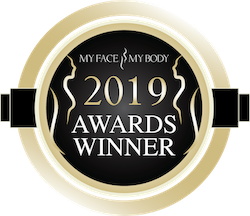People come from all over the world to enjoy Lake Tahoe's beautiful views, clear air, and sunny skies. Whether you hike or ride bikes, play golf, or just lounge on the beach, you have to come to grips with our harsh high-altitude sunlight. Since our thinner air filters less ultraviolet light than that of lower elevations, it's much easier to get a sunburn here - or worse, photodamage in the form of age spots and wrinkles, or even skin cancer.
So, most of us will be buying sunblock; the rest of us should be, but aren't. Fortunately, most Tahoe stores sell many brands of sunscreen, so we have lots of choices. Unfortunately, most sunscreens aren't very good - unless we educate ourselves about the ingredients we're just choosing blindly based on price, brand loyalty and pretty packaging. The good news: a little education goes a long way and if you know what to look for, you can find good options.
Ultraviolet rays come in two main types. The first, UV-B, are the rays that cause sunburns. The SPF number on sunscreen labels rates how effectively it blocks UV-B. UV-B rays make little contribution to long-term skin damage or cancers.
The other rays, UV-A, penetrate further into the skin. Since they damage deeper skin layers, they don't cause sunburn - but they do cause photoaging and cancer. The SPF number on the side of a sunscreen has nothing to do with whether the sunscreen blocks 0% of UV-A, or 100%.
This is so important, I'm going to say it again: your primary concern should be your sunscreen's ability to guard you from UV-A rays, not UV-B. The SPF rating has nothing to do with this. You can buy a sunscreen with an SPF of 50 or even 80, and still receive ZERO protection against photoaging and cancer. In fact, if the sunscreen allows you to stay out in the sun longer without burning, you've greatly increased your risk.
Sunscreen labelling is close to useless. When you pick a sunscreen, you should base your decision on the list of ingredients, not the packaging claims. Currently there are 15 ingredients approved for use as sunscreens. Only four block UV-A. The other 11 provide little or no UV-A protection. When you buy a sunscreen, choose one that contains UV-A blocking ingredients.
The first two UV-A blockers are avobenzone & ecamsule. Both work by absorbing ultraviolet light and re-emitting it as harmless infrared light. Both are clear when rubbed onto skin.
The other two UV-A blockers are titanium dioxide and zinc oxide. These ingredients reflect ultraviolet light. Until recently they were unpopular because they also reflect visible light, making them look opaque and white. These days however, manufacturers can create very small particles of both compounds. Although these "micronized" particles reflect UV light, they are too small to reflect visible light, so they look clear. I recommend sunscreens based on titanium dioxide and zinc oxide, if you can find a formulation that you like.
If you see ingredients other than avobenzone, ecamsule, titanium dioxide, or zinc oxide, they are only keeping you from getting sunburned. They are not preventing premature aging or cancer.
So why do sunscreen manufacturers use those other 11 ingredients that don't block UV-A? In a word: money. It's much cheaper to create a luxurious-feeling, clear sunscreen with them than with more effective ingredients. Since most of my medical practice consists of treating age spots and wrinkles from photodamage, I can emphatically say that it is much easier and cheaper to use an expensive sunscreen now rather than deal with the damage later. And if you, like one in five other people, eventually develop a sun-induced skin cancer, you'll really wish you had spent a little extra when you were younger.


